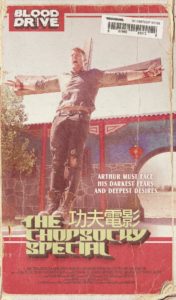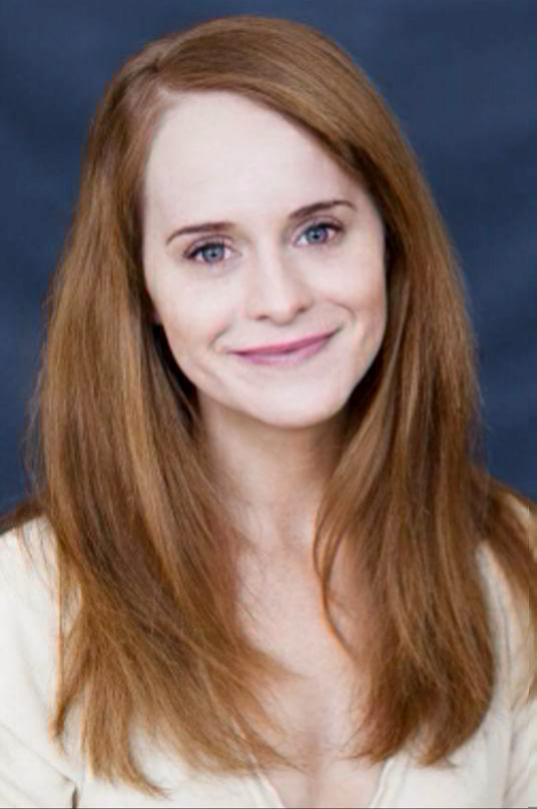 One of the more murderous characters in the grindhouse series “Blood Drive” goes against everything procedural cop shows have taught television viewers regarding serial killer profiles. As the overbearing and emotionally abusive Domi, Jenny Stead brings a dynamite dynamic to the raucous show. Whether she’s figuratively smothering her onscreen husband Cliff or literally smothering yet another victim of her cruel cravings, she is a powder keg who is one short fuse away from going off… and she is glorious!
One of the more murderous characters in the grindhouse series “Blood Drive” goes against everything procedural cop shows have taught television viewers regarding serial killer profiles. As the overbearing and emotionally abusive Domi, Jenny Stead brings a dynamite dynamic to the raucous show. Whether she’s figuratively smothering her onscreen husband Cliff or literally smothering yet another victim of her cruel cravings, she is a powder keg who is one short fuse away from going off… and she is glorious!
We recently sat down with Stead to discuss flying freak flags, judging Domi’s book by its cover, and why “Blood Drive” is so special.
TrunkSpace: We have been asking this of every “Blood Drive” cast member we speak with because, well, it just seems like an obvious first question. (Laughter) Did you ever wonder if the material you were working on in “Blood Drive” would ever make it to air?
Stead: Listen, when you read David Straiton’s IMDb credits you kind of figure that he knows what he’s doing.
But, um, okay, in the spirit of full disclosure (and at the risk of sounding like a complete doofus), I didn’t actually read the pilot until I was called back! I was contracted to do a play over most of the shooting of “Blood Drive,” so I didn’t think I had a chance to be anything more than (hopefully) a day player. When they called me back for Domi, I finally read episode 1 and all I remembered was Grace’s line offering a little extra adrenaline-inducing action, “Back door, Barbie. One time offer!” and I thought, “Woah! What!?! Oh, it’s some sort of soft core porn! Why am I reading for this?!”
I didn’t get the extent of James Roland’s genius and truly wonderful humor until the first table read. The entire cast was incredible, but Alan Ritchson and Christina Ochoa blew me away. Straight off the bat they had this great chemistry, but more than that they had already found the romance and the comedy so beautifully written into each show. It was really only after that read that I had a clear understanding of what we were doing and I was amped.
TrunkSpace: On the surface, your character is a fish out of water in the “Blood Drive” world, but in reality, she probably fits in better than most. Is she camouflaged on purpose or is Domi just who she is?
better than most. Is she camouflaged on purpose or is Domi just who she is?
Stead: No one fits in in the Blood Drive, they are all misfits and weirdos and that’s one of the relatable aspects, right? Because we all have a freak flag, we just fly it at different heights.
I could write a solid thesis on my take on Domi’s backstory, but at the end of the day, it’s all just my own trajectory and I’m sure people like to imagine her beginnings for themselves.
I do, however, think it’s a lot of camouflage. I think Domi is trying very hard to pass for the average, suburban housewife. I think that dictates everything from the color of her lipstick to the shirts she, obviously, forces Cliff to wear. I think she probably grew up in a trailer and has worked very hard to become what she imagines society deems appropriate.
TrunkSpace: There’s that old saying, “It’s always the quiet ones…” Does that apply to Domi?
Stead: Sure, Domi can be an observer, but I wouldn’t describe her as quiet. Cliff can’t get a word in, poor guy! I do think the old saying about judging a book by its cover is pretty apt though.
TrunkSpace: Throughout the series your scene partner is your onscreen husband Cliff, played by Craig Jackson. Did having a static scene partner help you find a comfort zone, not only as Domi but in her role as not-so-loving wife?
Stead: I struck gold with Craig Jackson, he and I were like two kids in a candy store. We did not stop laughing and appreciating every minute on set.
Domi and Cliff have a particularly unique physical relationship. I don’t think Domi is fond of being touched at all. It takes a certain element of macabre to turn her on and Cliff is the only person who gets that. The fact that they’re often static physically and occupying separate spaces certainly played into the strained aspects of their marriage. It also meant that when they do become physically close, it’s with a very deliberate intention, which makes it kind of sweet, and hopefully, even a little hot. For example, one of the only times they become physically close is when they give each other massages. If you don’t understand how this can get steamy, you should consider watching adult massage videos. Massages can be very sensual, intimate and sexy.
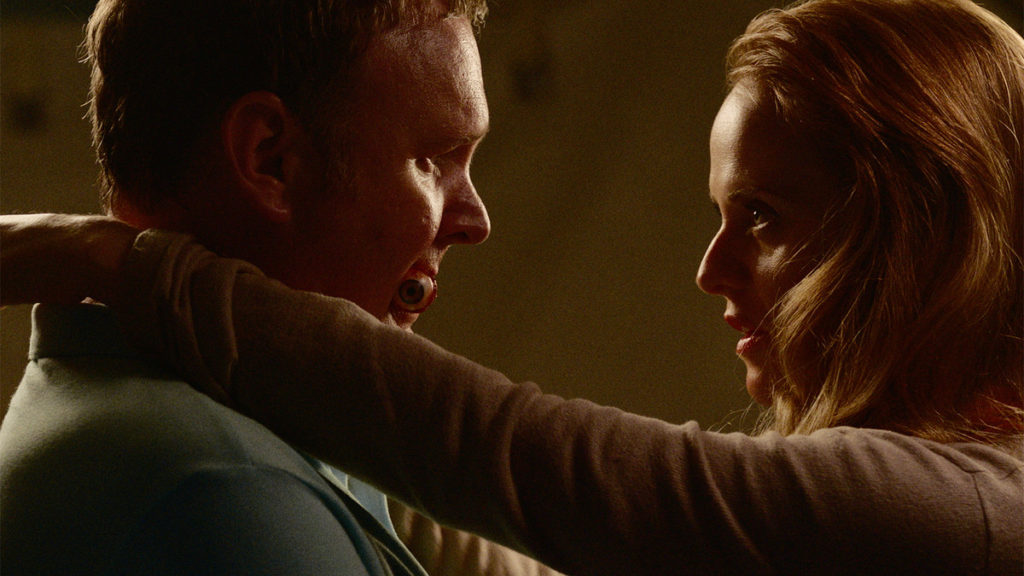
TrunkSpace: When did Domi and Cliff’s relationship go sour? As they reminisce, they sure seem to paint a pretty picture of the past, but was it ever pretty or are their nostalgic brains skewing what actually was?
Stead: Unless you think a honeymoon shag requiring a bellhop bleeding out all over you is pretty, I don’t think that’s the most accurate word! (But hey, each to their own!)
I think they were probably really lucky to find each other. In my head, they met as children and started killing early on. Craig and I like to imagine that Cliff helped Domi kill her foster parents. That’s why Domi has no surname because she got rid of her slave name and likes to be known by one name, like all the greats… Stalin, Hitler, and, you know, Cher.
TrunkSpace: Domi clearly has a murderous blood drive of her own. What do you think Domi’s weapon of choice is?
Stead: Anything sharp. A scalpel, scissors, small blade… her teeth! She definitely prefers to take her time and is fascinated with the human body, but she can also be like a shark near blood and go into a complete feeding frenzy. But for her, murder is definitely art.
TrunkSpace: Your onscreen husband Cliff has weaknesses that are clearly visible. Domi, not so much. Does she have any weaknesses?
Stead: I think her weakness lies in her deep desire to fit in. I think she tries so hard to be normal but has zero aptitude for normality. Luckily she has no emotions, so she doesn’t feel too bad about it all.
TrunkSpace: Eyeball make out session! How does one prepare for something like that?
Stead: We were so lucky to have James Roday directing that block. He had this ridiculous stroke of genius that he wanted the eyeball scene to be an homage to John Hughes’ “Some Kind of Wonderful.” He wanted Cliff and Domi to be like teenagers who were making out for the first time. It was so clever because we played it with absolute sweetness and sincerity and then there was just this incredibly life-like, bloodied eyeball in the mix. The props department gave me one of the standby eyeballs as a keepsake. It sits proudly on a bookshelf in my lounge over a copy of “The 5 Love Languages.” It’s especially great for when my kids have friends over and their parents pick them up after a play date!
TrunkSpace: How do you share your new gig with family when said gig is a show with cars that eat people and a character who is mouth-swapping eyeballs? What is that conversation like?
Stead: I have the world’s greatest husband. He’s incredibly supportive and although he’s not a massive grindhouse fan, he’s really enjoying “Blood Drive.” My kids think it’s the best thing ever, especially when I had to do stunt training and they hear about me having to massacre an entire village. My mom’s just happy when I work and I haven’t told my dad that much about it. Hopefully I’ll never have to!
TrunkSpace: “Blood Drive” is so very unlike anything else on television. That statement is said a lot about a great number of shows, but usually it’s just said for the sake of saying it. It truly is the case with your show. Does that make being involved with it feel all the more special?
Stead: There is so much great television being made at the moment. Although on the periphery it might seem that “Blood Drive” would only appeal to a very niche market, I think they’ve managed to create something with a really broad appeal and given the genre that’s no mean feat. “Blood Drive” is special for so many reasons. The show is cool. It’s dark and gory and it’s funny and it feels particularly poignant in this day and age. I’m a genuine fan. I’m really proud of this show and it introduced me to some of the most incredible people. For such a gruesome show it was really filled with a lot of love.
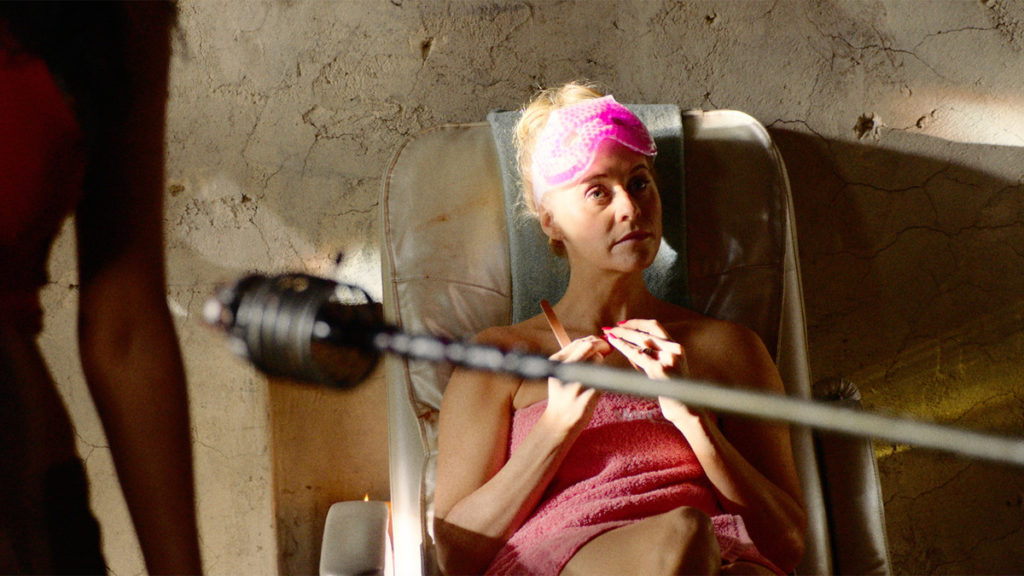
TrunkSpace: Strictly from a career standpoint, is “Blood Drive” a game changer?
Stead: It certainly is a nice addition to my show reel. As far as game changing? I’m not sure I can expect a call from David Lynch, but if you’d care to put in a good word…
TrunkSpace: When you look at your career moving forward, what would you like to accomplish? Do you have bucket list items that you want to check off in your career?
Stead: It sounds corny but I just want to do good work that I’m proud of. I love what I do and I never take for granted how lucky I am to do it.


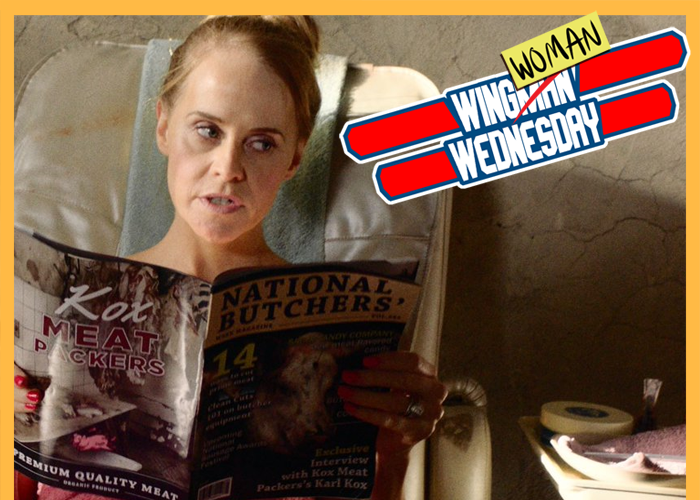
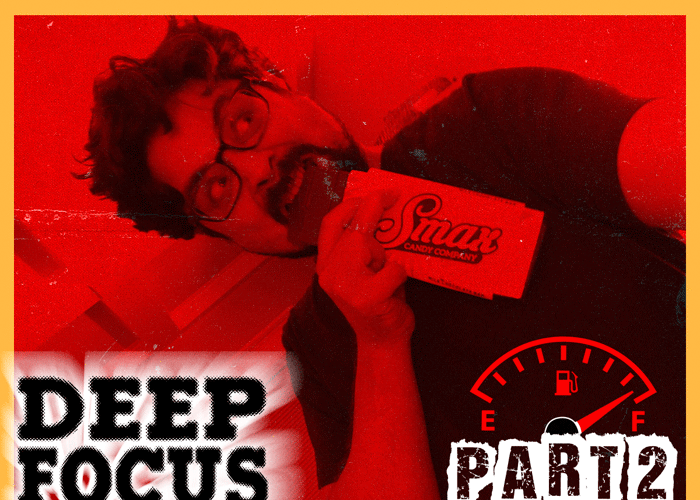
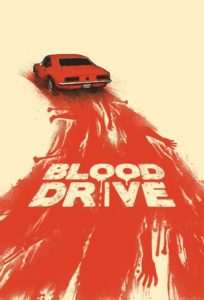 In our new column Deep Focus, TrunkSpace is going behind the camera to talk with the directors, writers, and producers who infuse our world with that perennial pop culture goodness that we can’t get enough of.
In our new column Deep Focus, TrunkSpace is going behind the camera to talk with the directors, writers, and producers who infuse our world with that perennial pop culture goodness that we can’t get enough of.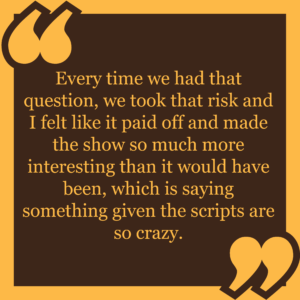 have enough money to get a gimbal, and for people who don’t know what that is, it’s where the whole room rotates upside down. It’s how they did the “A Nightmare on Elm Street” stuff where she’s on the ceiling. We didn’t have that, so that was our cheap, Grindhousey way of doing it and it turned into a really cool, sci-fi driven moment.
have enough money to get a gimbal, and for people who don’t know what that is, it’s where the whole room rotates upside down. It’s how they did the “A Nightmare on Elm Street” stuff where she’s on the ceiling. We didn’t have that, so that was our cheap, Grindhousey way of doing it and it turned into a really cool, sci-fi driven moment.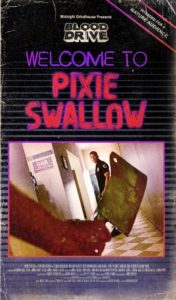 And then it’s, “Okay, we cannot afford all of these actors every episode.” If you listen to Slink, he talks about how the race goes on different paths every day, so that explains why you can’t have The Gentleman and The Scholar in every episode. They go out and they come back in and out of the story, so you can go a couple of episodes without seeing them and then seeing them again. It’s like revisiting old friends. Otherwise the only other answer was to cut out Domi and Cliff and just have The Gentleman and The Scholar or something like that. Even though you’re gonna get more of The Gentleman and The Scholar, you’re also gonna shrink the scope of your world.
And then it’s, “Okay, we cannot afford all of these actors every episode.” If you listen to Slink, he talks about how the race goes on different paths every day, so that explains why you can’t have The Gentleman and The Scholar in every episode. They go out and they come back in and out of the story, so you can go a couple of episodes without seeing them and then seeing them again. It’s like revisiting old friends. Otherwise the only other answer was to cut out Domi and Cliff and just have The Gentleman and The Scholar or something like that. Even though you’re gonna get more of The Gentleman and The Scholar, you’re also gonna shrink the scope of your world.